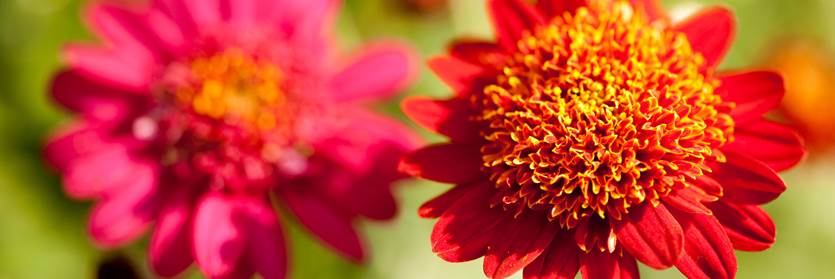Spotlight on: Barbara Thiers, Ph.D.
Posted in People, Science on April 1 2009, by Plant Talk
Where Plants Live Forever
 |
Amanda Gordon is a freelance writer based in New York City. |
 The displays in The Orchid Show: Brazilian Modern include specimens of orchids and other plants from Brazil that are stored in the Botanical Garden’s William and Lynda Steere Herbarium. The fourth largest herbarium in the world and the largest in the Western Hemisphere, it contains more than 7 million specimens of plants and fungi.
The displays in The Orchid Show: Brazilian Modern include specimens of orchids and other plants from Brazil that are stored in the Botanical Garden’s William and Lynda Steere Herbarium. The fourth largest herbarium in the world and the largest in the Western Hemisphere, it contains more than 7 million specimens of plants and fungi.
So how does the Herbarium work, and how do scientists use it? To find out, I sat down with Dr. Barbara Thiers, Director of the Steere Herbarium and the C.V. Starr Virtual Herbarium. A plant scientist specializing in liverworts, Barbara belongs to a botanical family: Her father was a botanist who ran a herbarium, and her husband, Dr. Roy Halling, is also a scientist at the Garden, focusing on mushrooms.
What is the history of herbariums?
The concept of the herbarium originated in 14th- or 15th-century Italy. Plants were collected because people figured out early on that plants could be useful in treating maladies. Reference collections were made so people would know what plant to use for what. At first the plants were kept in bundles. Then someone got the idea of pressing the plants and putting them in books. The plants are then mounted on paper. That’s how specimens are preserved to this day.
Where are the specimens stored?
It’s amazing the amount of design that goes into making a good herbarium cabinet. The specimens are kept in specially designed steel cases with good sealing gaskets that keep them flat and dry and dark and away from bugs. If they’re well maintained, they can last indefinitely.
How do scientists use the specimens in the Steere Herbarium?
There’s a lot of use by people who are documenting rare and endangered species. Others are using the data for ecological modeling so they can ask questions about how the vegetation will change and how fast temperatures will rise in order to identify areas that are endangered or that are critical habitats for animals. A user could be curious about particular groups of plants—for example, forest species that are used for timber.
We have a number of herbarium sheets that are the “first-known collections” of specimens, such as purple loosestrife and cheat grass. The sheets can help to date the invasion of a species and to understand how a plant may have moved across a country. Government agencies are also heavy users—for example, the folks at Kennedy Airport. When they confiscate plant material, they’re supposed to do the best job they can to identify the material.
Do these records become obsolete?
No. Just the opposite: The specimen in the herbarium is how you save it forever after. Even when you have a very high-resolution digital image, there are some things you can only examine by looking at the actual specimen. This is the best information on what plants grew where and when.
You’ve already digitized 1.7 million specimens since 1995. What are your objectives for online access?
We have to do our best to handle all the material and make it as available for scientific research as possible. Our goal is to digitize the whole Steere Herbarium and to constantly improve the way we do it. Electronically, we’ll take some big leaps in how we share our data online. Wherever possible, we are linking the information about the specimens to the research that’s been done here by our staff and to the library collections. We’re creating a portal to the research that’s been done here.
How much use does the Steere Herbarium get?
People who come here to look at the specimens total 1,200 days spent here each year. We also send out 40,000 to 50,000 specimens a year for people to borrow. We send and receive 350 specimens a day in our shipping office.
Can amateur botanists use the Steere Herbarium or the Starr Virtual Herbarium?
We don’t have a lot of content that interprets what we have for a general audience, but we have some evidence that general audiences use it. We get a lot of hits by state and educational Web sites. We have dried specimens, so someone has to be able to look at a dried plant and imagine what it looks like. To look up a specimen you have to know the scientific name.
Do you get a chance to enjoy the living collections at the Botanical Garden?
I really love the Rock Garden, and one of my favorite places is Azalea Way. I like them not because they’re beautiful to look at, which they are, but because I have a great fondness for the plants that grow in those spots.
Please help support the important botanical research, education, and programs that are integral to the mission of The New York Botanical Garden.

